Just because you’re a monk doesn’t mean you can’t use CAD. The Carmelite monks of Wyoming are building a grandiose Gothic Monastery, and it’s awe inspiring how they are managing to build it.
The Carmelite monks needed a new, larger monastery to house their growing numbers, and found a parcel of land near Meeteetse Creek in Wyoming. The design of their new Gothic monastery was outsourced to an architectural firm. Gothic architecture is characterised by key architectural elements such as pointed arches, large stained glass windows, rib vaults, flying buttresses, pinnacles and spires, elaborate entry portals, and ornate decoration.
After some research, the monks settled on using Kansas Silverdale limestone for the monastery. Cutting and carving the elaborate stone pieces required for such a project, within time and cost constraints, could only be achieved using CNC machines. Hand carving was ruled out as it was a very slow process, would cost a whole lot more, and it wouldn’t be easy to find the artisans for the job. So when it came to shortlisting vendors for the vast amount of stone cutting and carving required for construction, the monks found themselves alarmed at how prohibitively expensive it would turn out to be.
Since stone carving and installation were the most expensive items for the overall project, the monks decided to tackle that job themselves. This meant learning the whole CNC stone-carving workflow, all about stone cutting machinery, operating CNC machines, CAD modelling, CAM programming, stone masonry and construction techniques. Planning for the project started in 2010. In 2013, they purchased their first CNC machine from Prussiani Engineering S.p.A., who specialise in stone cutting machines, integrated with stone cutting CAD/CAM software from Pegasus CAD-CAM. Prussiani also provided support to the monks as they embarked on their CNC journey. After spending time learning all the skills and some trial-and-error later, actual construction on the project started in 2014 and continues till date. Their early days were not without a few disasters. In their own words –
“A few months after we started carving stone, we left our first CNC machine running overnight on several 7 foot long window sills. We woke to a shocking surprise the following morning. The huge stones, weighing several hundred pounds each, had been thrown about as if a tornado had ripped through the machine. Stones were snapped and shattered, the fragments scattered about the inside of the CNC milling area. After the shock settled, we proceeded to analyse what had happened. It turns out there was a mistake in the particular batch of code the machine had read and followed that night. At the very end of each window sill, after it had completely finished carving, the code told the CNC machine to repeatedly pound down into the top of the sill, almost as if it was a giant fist. The stones didn’t stand a chance, but that same machine is still carving stones to this day, almost a decade later.”
Their website has a crash-course like coverage of Gothic architecture, and details on the various sub-structures that comprise the monastery. It is still work in progress, and many years to go before they finish it. So far, they have managed to complete the Chapter House, see video embedded, and they keep posting updates on their website and YouTube channel.


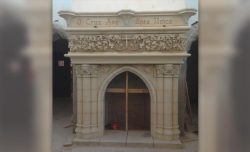
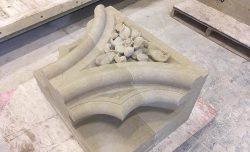
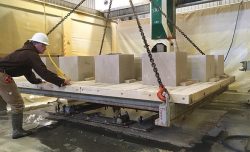
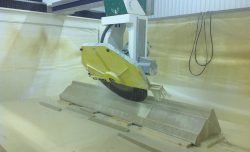
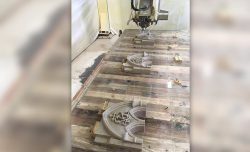
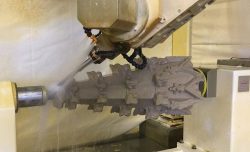
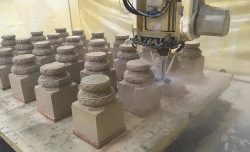
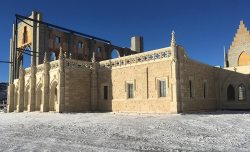

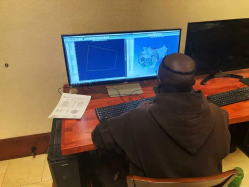
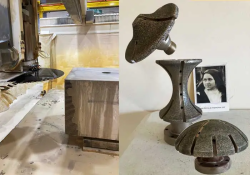
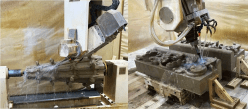
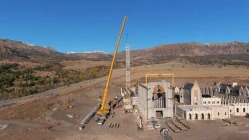
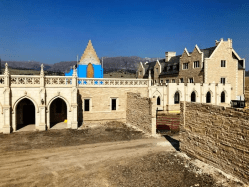
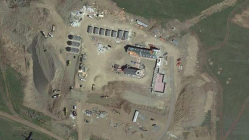













I am immensely envious that they get to build a Gothic Cathedral. I want one, too!
Well, it makes sense. Give a group of people modern CAD/CAM tools and all the free time that comes with a vow of celibacy and they had better be able to make something amazing!
Not envious though…
I want a gothic personal spa, with full length pool!
I look forward to the rise of midwestern techno-gothic
Construction is rather high-tech.
https://www.forconstructionpros.com/construction-technology/article/22445121/microsol-resources-how-technology-impacts-construction-efficiency
Nice pastiche, but maybe i’m a little biased as I come from europe and know the real deal. Although I have not seen a cnc in use on restauration sites.
But the Gothic you’re used to is several hundred years old, you can’t expect it to be exactly the same.
@Hirudinea said: “But the Gothic you’re used to is several hundred years old, you can’t expect it to be exactly the same.”
Maybe @macsimski is a time traveler from the past; after all…
restauration: archaic variant of restoration[1]
1. https://www.merriam-webster.com/dictionary/restauration
OMG, you’re right, he’s here for our aluminum cans!
Praise the omnissiah
Well that is the very definition of the middle of nowhere. 14 miles from the nearest street view from 2015
Well when one follows the “go big or go home” school of building one needs lots of cheap land.
https://youtu.be/9yO5nJNDx-Q
reminds me of the Arthur C Clarke story – The Nine Billion Names of God
Or, A Canticle for Leibowitz
https://en.m.wikipedia.org/wiki/A_Canticle_for_Leibowitz
Did they use a medieval comuter to run the software?
Or maybe they had a large room of computers to do the calculations.
There’s a Warhammer 40k Tech-Priest joke to be made here but I don’t know the lore well enough to make it funny.
“At the very end of each window sill, after it had completely finished carving, the code told the CNC machine to repeatedly pound down into the top of the sill, almost as if it was a giant fist.”
Wow! That’s one angry machine. :)
Maybe it was possessed! Need more than an anti-virus for that!
I watched an old video about making valves. To test if they were “microphonic” a young woman was (lightly!) tapping them – with a hammer.
At the time, I wondered if she was tested for a hangover, or even a cheating lover, before being let loose.
Now that jobs are automated, the same considerations should be applied to a programmer before you blindly run their code.
Well, it looks nice, but… It looks that something is missing in the stones.
May be the “spirit” of the human carving. Near 1000 years, people spent their lives building cathedral. It was a real human story. I can’t retrieve it there. Even if I recognize they spend time and it’s not an easy task. Even with computers and machine.
Look at what they’re doing to draw the salt out of the vault at Notre-Dame de Paris and you’ll see the when the stone is clean, it looks exactly like this. What your missing is the centuries of smoke, pollution, and acid rain that we often associate with historic stone structures.
Looking is not feeling.
When you know that each stone has been handle by several men, that it took a century to build… That’s not the same feeling than an object made by a robot, handle by two people and hydraulic means
If you prefer, the result is to perfect to be perfect…
Okay John Ruskin.
Grow up
With a monk’s vow of obedience, chastity, and poverty, I wonder how this project was funded? Perhaps a wealthy patron was looking for the fast track to heaven.
Hookers and blow, no doubt.
Also how it was inspired. Vow Schmow.
Don’t search for ‘fast track to heaven’ on urban dictionary. Just don’t. Have you ever learned anything from that sight you wouldn’t prefer to unlearn now?
The vows of poverty are personal vows. Monasteries aren’t dependent on parishioners’ charity like churches tend to be, the majority of them are in some kind of business. Coffee, ale, wine, whatever — *most* monasteries are much more like religion-oriented, God-focused businesses than anything else.
As my wife is a regular customer of their coffee “Mystic Monk”, we have been following their growth through the newsletters that they send. But I missed the part about the CNC doing the carving.
A monk also runs the crane that lifts the stonework into position.
We hope to visit them someday.
I am a bit surprised that they are using flying buttresses.
Modern construction techniques don’t require them.
But it’s tradition, lets hope they forgo the tradition of only finding out if the cathedral will stand after it’s complete!
That’s true. A lot of gothic construction details, like the complex finials atop the columns between the window arches, are just a device to put weight in the right place to keep the thrust line inside the walls.
With modern design insight, that could be replaced by a threaded rod running down to the foundation, keeping the column solidly in compression.
Still… if you want Gothic, you gotta have finials, even if they actually do nothing.
Thanks for the insight.
The number of Catholics in Wyoming and the size of their community does not require a church and//or monastery this size either. But they are doing it.
ON the plus side, now that they’ve bought the tools and perfected their skills, I bet these guys are able to corner a whole lot of the North American “Gotta find me a sculptor to restore my extravagantly decorated old building” market.
Pretty cool. I wouldn’t expect cathedral stone cutters to be in huge supply, and those that exist obviously don’t come cheap. I think we all have been burned setting up “a thing” to go overnight and been surprised for the worse in the morning.
A friend of mine is actually one. Worked on the Washington National Cathedral for years, up until some time after it was finished. Not so much work after that, though. Cathedrals seem to be few and far between. Got a break when the earthquake hit in 2011, which caused some damage. Now he’s back on the job. It’s solid, long term work, if you can find it.
Didn’t they have to train people? I remember something about something in the US where there weren’t enough workmen so they trained people, I think people with no previous skill.
Kind of out of place in Wyoming country :) …. Seems like that would be more appropriate in Europe. Like Transylvania… That said, for monks they sure have the money! So it goes.
This is going to confuse the heck out of the archeologists who dig this out in a thousand years but can’t place the construction methods and the architectural detailing in the same period.
Aliens. Definitely aliens.
love this, but
I hope they outsourced the finite element analysis on the roof and walls
Monks do not usually have the math and engineering design skills required, that is why they hired freemasons
Some of the old cathredrals collapsed during building, some shortly after being finished
It became an example of survival of the fittest. Medieval architects copied existing buildings, so bad designs (that had already collapsed) could not get repeated.
I am a bit disappointed that the comments on this topic don’t seem to be up to the usual quality for this website. I get that people are joking around, but it is also actually an area of real study. There are papers out there that reconstruct the design processes used for Gothic cathedrals, and that explain why surprisingly few of them actually did fall down in spite of their aggressive designs, and how they have managed to survive so long. Most of our modern construction will not last nearly as long. There was an entire theory of balancing forces. It is not the same as our modern structural engineering, but it worked. And it involved finding ways to put all of the forces into comprehension in the stone. Which means that without an earthquake or explosives, they last until erosion takes them away. You don’t have to worry about reinforcing rods rusting out. It is also pretty clear that cathedrals have been designed by all sorts of people. Artists, noblemen, monks (don’t forget that there have been scholastic orders for a very long time) and for all I know perhaps even Free Masons like the other commenter says.
What most people don’t understand is that historically building the great cathedrals was the closest thing there was to a social safety net. It is a part of why they took centuries, plural, to build each one. Being a serf in the country side was bad. You were a slave. But you probably would not starve. In the cities, of you could not find work, you did not eat. The massive cathedrals were works projects so even unskilled laborers could make enough to eat by hauling building materials. Because most places don’t really do things this way anymore, you don’t normally see cathedrals being built like this anymore. But I suppose if some monks in the Midwest want to build one with their own labor, well I am sure that it will be pretty.
So, they built an ‘gothic’ monastery in the midst of nowhere. The next major population centre is Salt Lake City, about 200 km away. What were they thinking?
Probably that they wouldn’t be bothered in their prayer and study.
i like this
The best thing is that they have the whole design of everything electronically. So it’ll take no effort at all to turn it into a CounterStrike level!
Monasteries can be 3D printed in the future.
Oooh! Who’s got access to the Notre Dame scans?
Cathedral-making is a niche job. OTOH, in Europe they’ve got a few million tons of the things sitting around, and they need a lot of upkeep and restoration.
I saw a great documentary on the Cologne cathedral, which was started in 1248 and worked on until 1560. Restarted in the 1800s and got finished up to the original plan in the late 1880s. Religious or not, there’s something very spiritual about the continutiy and tradition of human effort on a project like that. The folks wielding the chisels today clearly felt their place in this very long chain, working on the same stone as someone in the 1300s.
Which put the “we had to use CAD/CAM because we had a tight deadline and a limited budget” of the Wyoming monks into a funny contrast.
Cologne cathedral, a truly timeless tourist trap.
Our football stadiums will be dust and Cathedrals will still generate cash flow.
Amazingly there is not a ‘Ripley’s believe it or not museum’ in the neighborhood. Europe really is different, rite down to the tourist money harvesting.
I worked construction, bricks, cement, wood, steel. Bridges, highrise, custom homes. Nothing as cool as this, easy for someone to sit in their modern building and talk smack about this project. The fact of the matter is putting together and planning this massive project is way beyond The ability of 99% of the public! Takes Grit to just hang tough with all that is thrown at you. Big bonus is if you’re there For the Topping Off Ceremony.
Couldn’t do that back in the day unless you’re Noah…….~~~~~*BB